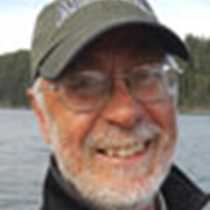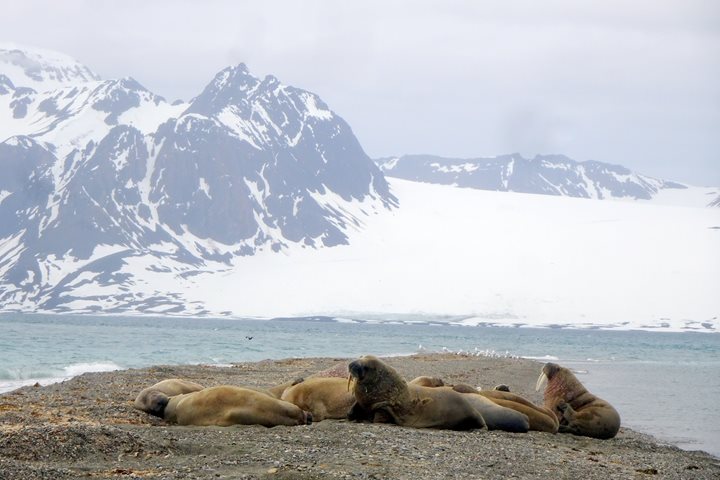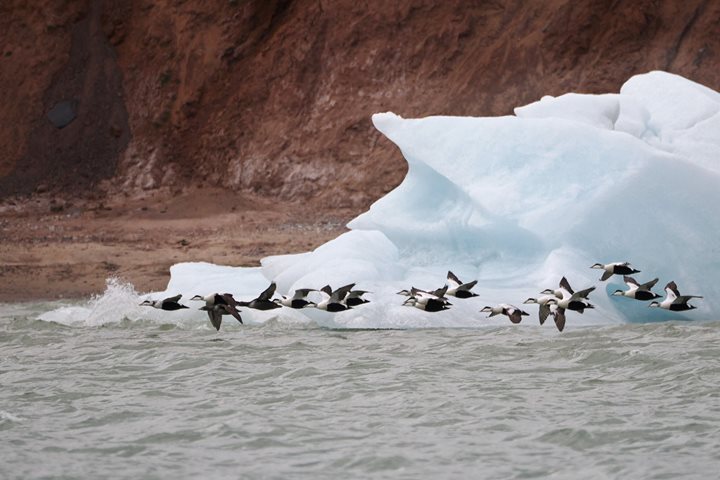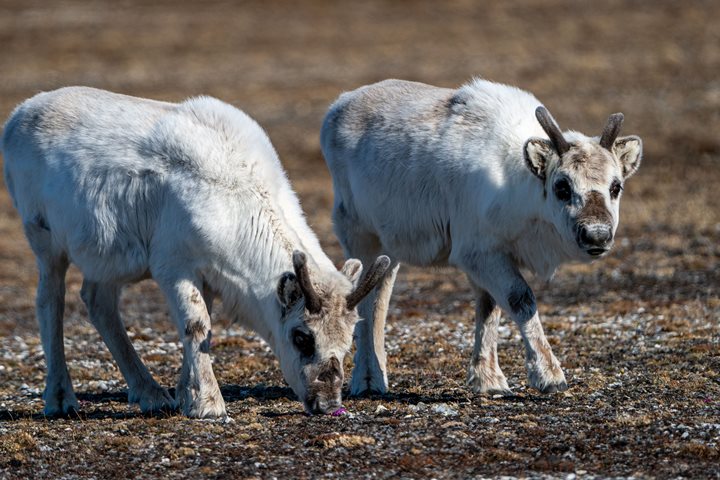After a quiet night at anchor just off our next morning’s landing sight, the National Geographic Explorer came back to life as the wake-up call was made, and breakfast was served. A short Zodiac ride took us to our landing site in Trinity Bay, a protected historic harbor near the end of Magdalenefjorden, a ten kilometer long fjord on the northwest side of the island of Spitzbergen. First half the guests went ashore to learn about the long history of this particular peninsula of land, while the other half went for a Zodiac cruise.
The landing is an area that was visited early on by some of the first ships to discover and explore the islands in the Svalbard Archipelago, and became the spot of one of the main whaling operations of the early whaling days around Svalbard. First established in 1612, there were activities associated with whaling almost continually at this site until 1650, when the whale numbers dropped in the more inland waters, and off-shore whaling activities started taking over. Along with seeing the remains of the “blubber pots” used to render the whale blubber into oil, there are about 130 graves of whalers scattered on the higher part of the peninsula. We also had a chance to see the recently returned Arctic Terns starting the breeding process, courting, mating and establishing there territories, along with a variety of other Arctic species!
While guests were enjoying learning about the history of the whaling industry in Svalbard, the Zodiac cruisers got a real treat, going to a walrus “haul-out”, an area where these massive animals gather on shore to rest in between their feeding forays. Sometimes walrus can weigh as much as two tons, and can live up to forty years. This was a great opportunity to see one of the iconic animals of the Arctic!
Finally, it was time to head further north to look for the real king of the Arctic, the polar bear! So within a relatively short time the National Geographic Explorer reached an expanse of “fast ice” in one of the bays at the north end of Spitzbergen, and with a little searching from the bridge, our first polar bear on ice was spotted. It was at a distance, and seemed to be sleeping, so soon the Captain and Expedition Leader decided to continue on to the “pack ice” which was just a very few miles north of our position.
After some searching we found a bear that had made a seal kill, but this well feed bear also was more interested in sleeping than giving us a show. So right after dinner we decided to leave our resting, and well satiated bear behind, and continue our search in the ice. Soon a bear was spotted walking along the ice edge, than another was seen further away on the ice. And finally a third! The Captain adeptly move our ship through the ice until we had a great view of one of the bears. What we didn’t know was that another bear that had been moving off turned and approached the National Geographic Explorer from the stern, came right up to the bow, locked at everyone for a few minutes, went into the water, and crawled out near the other bear that we had approach! There was a little posturing and circling of the two before our swimmer finally continued on. Then the first bear approached closely, thrilling everyone on board! What an incredible encounter, and a perfect end to a perfect day! Oh yeah, we also got to 80 degrees north before we left the ice!









